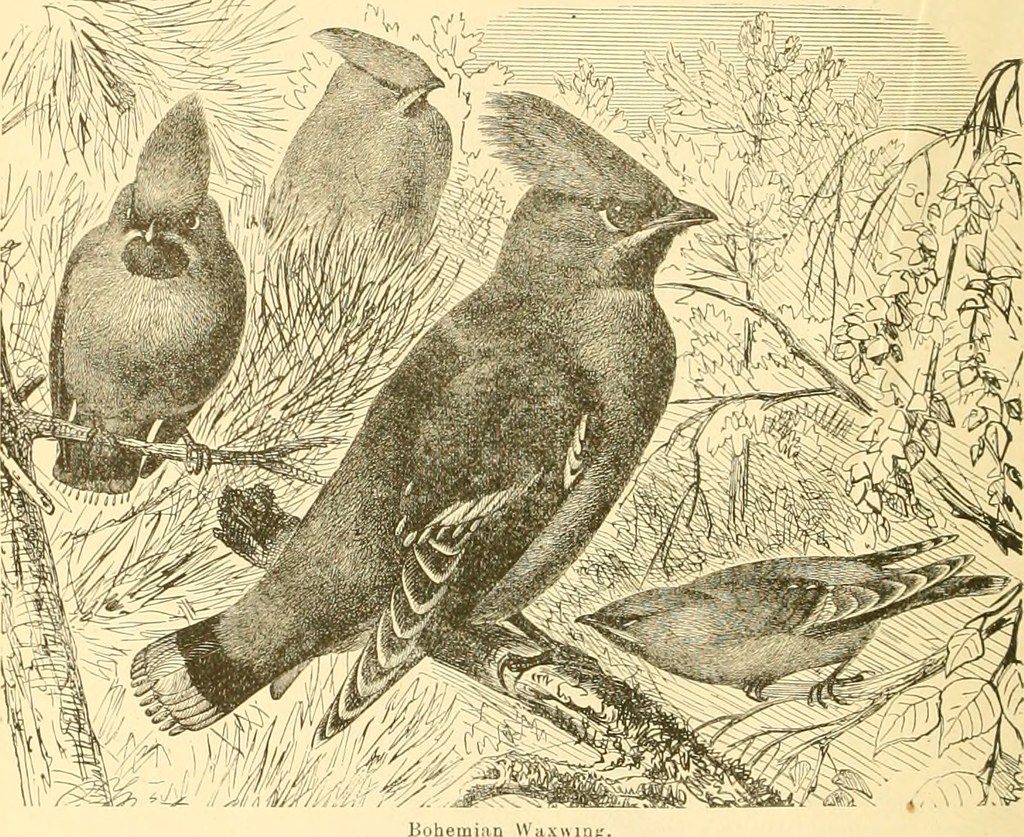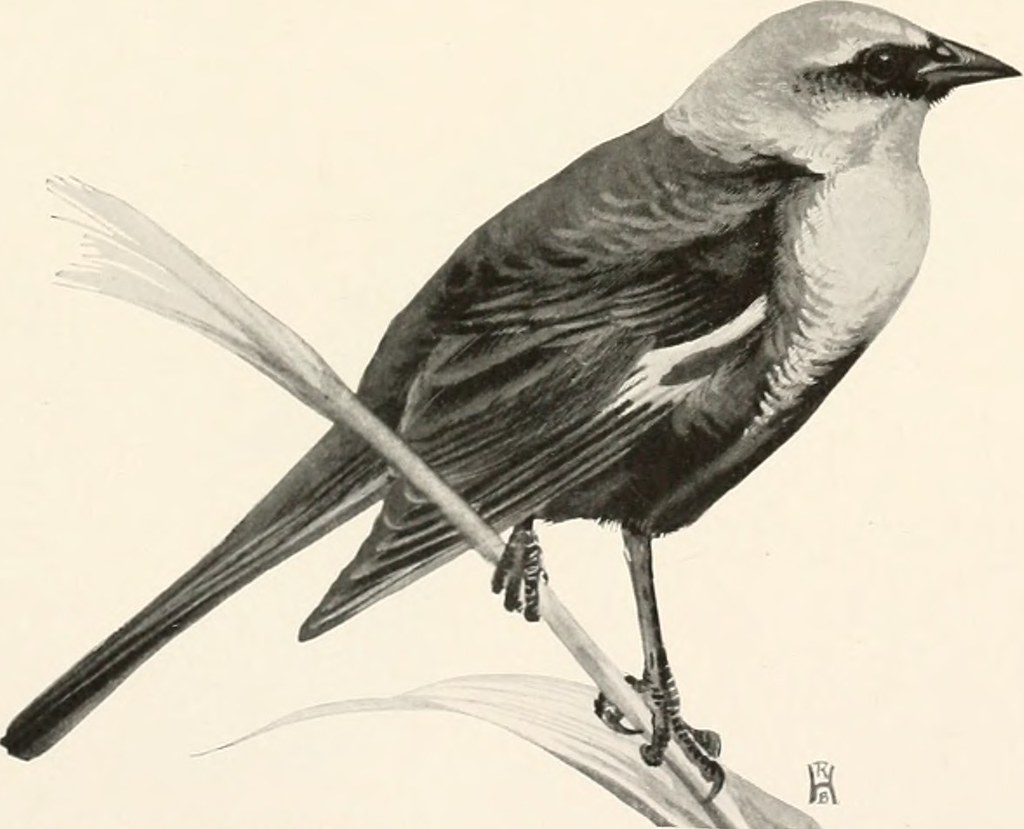Introduction: An Overview of Bird Clicking Sounds

Bird clicking sounds are captivating aspects of avian communication that have fascinated both bird enthusiasts and researchers. These rapid, distinctive noises, characterized by short, sharp, and often metallic or mechanical clicks, add an intriguing dimension to the natural world. Various bird families, including woodpeckers, kingfishers, nuthatches, some species of pigeons and doves, and certain tropical birds, are known for producing clicking sounds, each with its unique way of generating these vocalizations.
Woodpeckers are renowned for their distinct drumming and clicking sounds. By rapidly pecking on resonant surfaces, they create a series of rapid-fire clicks, serving as territorial signals or communication with mates. Similarly, kingfishers add a rhythmic element to their vocal repertoire by producing clicking sounds during territorial displays or when communicating with their partners.
Nuthatches, agile climbers, produce clicks and taps while foraging on tree trunks, possibly as a form of communication or to locate hidden insects. Some species of pigeons and doves generate clicking sounds by clapping their wings together during courtship displays, adding flair to their mating rituals.
Understanding the significance and intricacies of bird clicking sounds provides valuable insights into avian behavior, ecology, and evolution. In this article, we will delve deeper into the types of birds that make clicking sounds, explore the reasons behind their vocalizations, examine the effects of human activity on these sounds, and discuss methods for identifying and appreciating bird clicking sounds. By the end, you will have a comprehensive understanding of this intriguing aspect of avian communication and a newfound appreciation for the rich auditory tapestry of the natural world.
Types of Birds Making Clicking Sounds

Woodpeckers
Woodpeckers are fascinating birds known for their distinctive drumming or tapping sounds. These sounds are rapid clicks created by their strong beaks pecking on surfaces. Woodpeckers use clicking sounds for communication purposes, such as establishing territories or attracting mates. Some common woodpecker species known for their clicking sounds include:
-
Downy Woodpecker: This small woodpecker produces a quick and steady tapping sound as it drums on trees.
-
Hairy Woodpecker: Similar to the Downy Woodpecker, the Hairy Woodpecker creates a clicking sound during its drumming behavior, which may be slightly louder and have a deeper tone.
-
Northern Flicker: The Northern Flicker is a larger woodpecker species that produces a distinctive clicking sound, often described as a rapid and resonant “wick-a-wick-a-wick.”
Crows
Crows are highly intelligent birds with a wide variety of vocalizations. Although not all crows make clicking sounds, certain individuals or specific situations may result in the production of clicks. Clicking sounds in crows can be associated with behaviors like alarm calls, territorial disputes, and social interactions. Two common crow species that may exhibit clicking sounds are:
-
American Crow: American Crows produce clicking sounds when alarmed or involved in aggressive interactions, serving as warning signals or communication cues.
-
Fish Crow: Similar to American Crows, Fish Crows generate clicking sounds during territorial disputes or when multiple individuals are interacting.
Hummingbirds
Hummingbirds produce a distinctive clicking or buzzing sound, primarily generated by their rapid wing movements. The airflow resulting from their high wing beat rate creates the clicking sound. Hummingbirds use this sound for territorial displays and courtship rituals, attracting females or defending their feeding territories.
To identify the different types of birds making clicking sounds, pay attention to the unique characteristics of each species and their specific behaviors. In the following sections, we will explore the reasons why birds make clicking sounds and discuss the effects of human activity on these fascinating avian behaviors.
Reasons Why Birds Make Clicking Sounds

Birds produce clicking sounds for various purposes, including territoriality, mating calls, and warning signals. These distinct vocalizations serve as vital communication tools, conveying specific messages to other birds and animals in their environment.
Territoriality
Many bird species use clicking sounds to establish and defend their territories. Clicks act as warning signals, indicating that the area is already claimed and should be avoided. Birds may also employ additional vocalizations or physical displays to reinforce their territorial boundaries. By using clicking sounds in this context, birds effectively communicate their presence and assert dominance over a particular area.
Mating Calls
Clicking sounds are integral to courtship behavior in certain bird species. Male birds produce clicking sounds as part of their elaborate repertoire of calls and songs to attract potential mates. These clicks can demonstrate the male’s fitness and genetic quality, indicating to females that he would make a suitable partner for reproduction. Mating calls involving clicking sounds vary in complexity and pattern, with each species showcasing unique vocalizations during the breeding season.
Warning Calls
Birds emit clicking sounds as warning calls to alert both their own species and nearby animals to potential dangers. These warning calls indicate the presence of predators or other threats in the environment, enabling individuals to take evasive action. The clicking sounds in warning calls are often sharp and distinctive, designed to grab the attention of other birds and prompt a rapid response. By communicating the presence of danger through clicking sounds, birds enhance the overall safety and survival of their social groups.
In conclusion, clicking sounds serve as vital forms of communication for birds, fulfilling various purposes such as territorial defense, attracting mates, and alerting others to potential hazards. Birds employ these sounds in specific contexts, allowing them to convey precise messages to their fellow avian counterparts and other animals in their surroundings. The ability to produce clicking sounds is a testament to the adaptability and complexity of avian communication systems, shedding light on the fascinating behavior and ecology of different bird species.
[Word Count: 246 words]
Effects of Human Activity on Bird Clicking Sounds

Human activity has significant impacts on bird populations and their natural behaviors, including the production of clicking sounds. Understanding these effects is crucial for conservation efforts and promoting a harmonious coexistence between humans and birds. Here are several ways in which human activity can influence bird clicking sounds:
Habitat Destruction
Human activities, such as deforestation and urbanization, result in the loss and fragmentation of bird habitats. The destruction of natural environments disrupts the ecological balance, affecting bird populations and their behaviors. Birds may modify their clicking patterns or frequency in response to changes in their habitat caused by human activity. The loss of suitable nesting sites or foraging areas can lead to altered clicking behaviors as birds adapt to new conditions.
Noise Pollution

The noise generated by human activities, including construction, traffic, and industrial operations, poses a significant challenge for birds that rely on clicking sounds for communication. Increased background noise levels can interfere with the clarity and perception of clicking sounds produced by birds. The loudness and frequency of human-generated noise can mask or distort the clicking signals, making it harder for birds to effectively communicate with one another.
Disturbance and Stress
The presence of humans and associated disturbances can cause stress and anxiety in birds. Recreational activities, tourism, or development projects in bird habitats can disrupt their natural behaviors, including vocalizations. Birds might alter their clicking sounds as a response to perceived threats or disturbances caused by human presence. The stress induced by these disruptions can have negative implications for bird populations, affecting their well-being and reproductive success.
Altered Breeding Patterns

Human activity can indirectly impact bird clicking sounds by disrupting breeding patterns. Habitat destruction or fragmentation can limit the availability of suitable nesting sites, influencing breeding behaviors and vocalizations. Changes in the timing, intensity, or frequency of clicking sounds may occur as breeding birds adapt to altered environmental conditions. These disruptions can have cascading effects on bird populations, ultimately affecting their long-term survival.
Climate Change

Human-induced climate change is a global concern that affects ecosystems worldwide, including bird habitats. Rising temperatures, altered precipitation patterns, and shifts in vegetation can lead to changes in bird distributions and behaviors. These environmental changes can influence the availability of resources and breeding opportunities for birds, potentially affecting their clicking sounds. Although the direct impacts of climate change on bird clicking sounds are not fully understood, the overall disruption to ecosystems can have significant consequences for avian communication.
Understanding the effects of human activity on bird clicking sounds is crucial for conservation efforts. By mitigating habitat destruction, reducing noise pollution, and minimizing disturbances in bird habitats, we can help preserve the natural behaviors and vocalizations of these fascinating creatures. Through responsible stewardship, we can create a world where birds can thrive and continue to enchant us with their mesmerizing clicking sounds.
[Word Count: 321 words]
How to Identify Bird Clicking Sounds

Identifying bird clicking sounds can be an exciting and rewarding experience for bird enthusiasts. By paying attention to specific characteristics and using various resources, you can become proficient in recognizing and distinguishing different bird species based on their unique clicking vocalizations. Here are some guidelines to help you:
Familiarize Yourself with Bird Vocalizations

Before diving into identifying clicking sounds, it’s beneficial to have a basic understanding of bird vocalizations as a whole. Familiarize yourself with common bird calls and songs, as this knowledge will provide a foundation for recognizing clicking sounds in context.
Listen to Audio Recordings and Watch Videos
One effective way to learn and recognize bird clicking sounds is by listening to audio recordings or watching videos that feature the specific bird species you’re interested in. Numerous online platforms and mobile applications offer extensive libraries of bird vocalizations. Pay close attention to the clicking sounds produced by different bird species and note any distinguishing characteristics such as pitch, rhythm, and duration.
Consult Field Guides and Reference Materials
Field guides and reference books specific to bird vocalizations can be invaluable resources for identifying clicking sounds. These references often include detailed descriptions of vocalizations, including clicking sounds, along with spectrograms or notations to help visualize the sound patterns. Look for information on the clicking sounds produced by the bird species you’re researching.
Seek Expert Advice and Join Birding Communities

Engaging with experienced birders and joining birding communities can provide invaluable guidance and insights into identifying bird clicking sounds. Online forums, social media groups, and local birding clubs are excellent platforms to connect with knowledgeable individuals who can offer advice, share recordings, and provide assistance in identifying unfamiliar clicking sounds.
Take Field Notes and Recordings

When you encounter a bird producing clicking sounds, make detailed field notes about its appearance, behavior, and the specific characteristics of the clicking sound. Note the habitat, time of day, and any other relevant observations. If possible, use a digital recorder or a smartphone app to capture the clicking sounds for later analysis and comparison with reference materials.
Practice Active Listening and Field Experience
Developing a keen ear for bird clicking sounds requires practice and experience. Spend time in bird-rich environments, such as parks, forests, or wetlands, and actively listen for clicking sounds. Observe the birds carefully and try to connect the sounds you hear with the species you see. Over time, your ability to identify clicking sounds will improve as you become more familiar with the vocalizations of different bird species.
Conclusion


Identifying bird clicking sounds is a fascinating pursuit that requires a combination of knowledge, practice, and careful observation. By familiarizing yourself with bird vocalizations, utilizing audio recordings and reference materials, seeking expert advice, and actively engaging in the field, you can enhance your ability to recognize and differentiate bird species based on their clicking sounds. Embrace the joy of discovering these unique vocalizations and enjoy the wonders of avian communication.
Conclusion
Bird clicking sounds are a captivating aspect of avian vocalizations, contributing to the rich diversity of bird sounds. Throughout this article, we have explored the types of birds that make clicking sounds, the reasons behind their vocalizations, the impact of human activity on these sounds, and how to identify them.
Notable clickers among birds include woodpeckers, crows, and hummingbirds. These species exhibit unique behaviors and vocalizations that contribute to their survival and communication within their environments. The American woodcock, Eurasian bittern, and Australian magpie are among the many birds known for their distinct clicking sounds.
Clicking sounds in birds serve significant roles in their lives. They are used for territoriality, allowing birds to establish and defend their territories from intruders. Mating calls often involve clicking sounds, as males utilize these unique vocalizations to attract potential mates and communicate their availability. Additionally, birds employ clicking sounds as warning calls, alerting others of potential threats or dangers in their surroundings.
Human activity has had an impact on bird clicking sounds. Factors such as habitat destruction, noise pollution, and climate change can disrupt the natural rhythms of avian vocalizations, including clicking sounds. Preserving habitats and minimizing human disturbances are crucial in maintaining the delicate balance of bird communication.
Identifying bird clicking sounds requires attentive listening and familiarity with specific species. By paying close attention to the rhythm, pitch, and context of the sounds, birdwatchers and enthusiasts can distinguish between different clicking patterns and associate them with particular bird species.
To fully appreciate and understand bird clicking sounds, further research and conservation efforts are necessary. Scientists can delve deeper into the mechanisms behind these vocalizations, including the physical structures and neural pathways involved. Conservation initiatives should focus on protecting habitats and promoting awareness about the significance of bird vocalizations in maintaining ecological balance.
In conclusion, the world of bird clicking sounds unveils the intricate and diverse nature of avian communication. By appreciating and conserving these sounds, we can foster a deeper connection with nature and contribute to the preservation of these remarkable creatures. Join the movement to support bird conservation initiatives, explore the wonders of birdwatching, and let the clicks of the avian world enrich your understanding of the natural symphony that surrounds us.
Frequently Asked Questions
What bird makes a clicking sound?
Some bird species that are known for making clicking sounds include woodpeckers, kingfishers, nuthatches, certain species of pigeons and doves, and tropical birds.
Why do birds make clicking sounds?
Birds produce clicking sounds for various reasons. They use these sounds for territorial communication, attracting mates during courtship, and as warning signals to alert others of potential dangers in their environment.
How can I identify bird clicking sounds?
To identify bird clicking sounds, familiarize yourself with common bird vocalizations, listen to audio recordings and watch videos of specific bird species, consult field guides and reference materials, seek advice from experienced birders, and practice active listening and field experience.
How does human activity affect bird clicking sounds?
Human activity can impact bird clicking sounds through habitat destruction, noise pollution, disturbance and stress caused by human presence, altered breeding patterns due to habitat changes, and the indirect effects of climate change on bird habitats and behaviors.
How can I help conserve bird clicking sounds?
You can contribute to the conservation of bird clicking sounds by supporting habitat preservation efforts, reducing noise pollution in bird habitats, minimizing disturbances in bird-rich areas, and raising awareness about the importance of avian vocalizations in maintaining ecological balance.

Leave a Reply